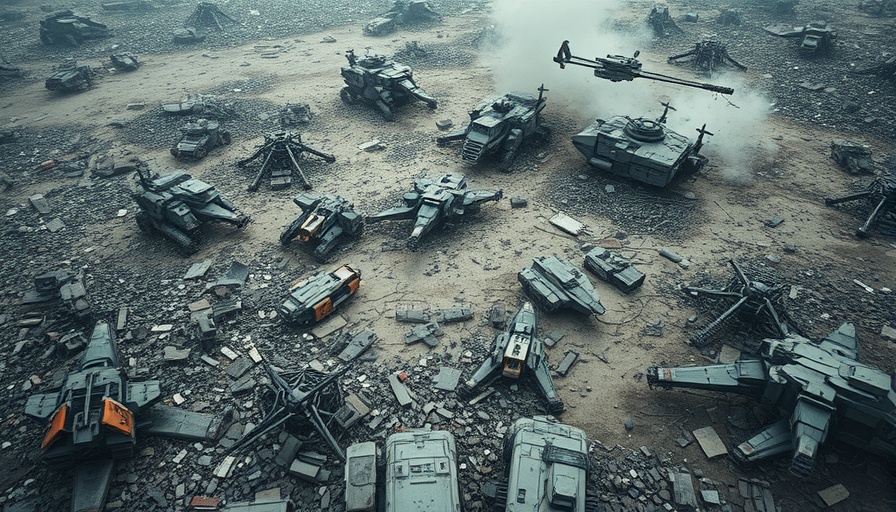
The Strategic Role of Robotics in Modern Warfare
The recent incident near Pokrovsk, where a damaged Russian T-90M tank breached Ukraine’s razor wire defenses, highlights a pivotal moment in the evolution of warfare. Instead of relying solely on human soldiers for repairs and defense, Ukrainian forces deployed unmanned ground vehicles (UGVs) to restore the damaged wire barrier quickly. This not only demonstrates the efficiency of robotics in high-risk environments but also underlines the shifting dynamics of military engagements where technology plays an increasingly vital role.
Why Does This Matter?
In a conflict where traditional methods are being challenged, the integration of robotics is reshaping how militaries operate. UGVs can perform dangerous tasks, such as laying wire, without endangering the lives of soldiers. A soldier from the 93rd Mechanized Brigade remarked on the utility of these robots, stating, "It makes it much easier to work in all areas." This flexibility may be crucial as the nature of combat continues to evolve.
Current Trends in Military Technology
As the war in Ukraine unfolds, the reliance on robotics is likely to influence strategic decisions on both sides. Armed forces worldwide are recognizing the benefits of deploying advanced tech to enhance their operational capabilities. According to military analysts, innovations in robotics and autonomous systems are not merely enhancements but essential components of future defense strategies.
The Future: More Than Just a Simple Tool
This incident outlines a broader trend in which military operations benefit from automation. As nations invest into technological advancements, we may see a new era of warfare characterized by fewer front-line casualties and the use of machines for dangerous assignments. Understanding these shifts is critical for anticipating future conflicts and ensuring that strategies are in place to adapt accordingly.
 Add Row
Add Row  Add
Add 




Write A Comment